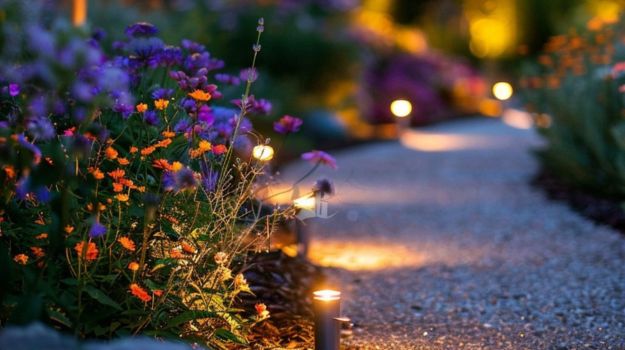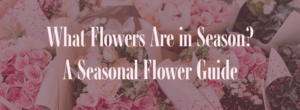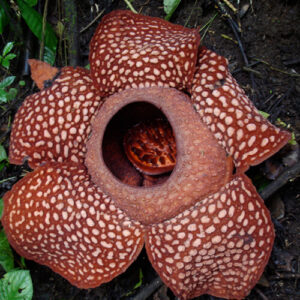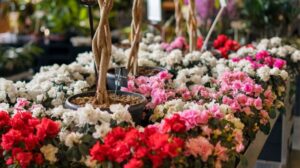Would you like stepping into your garden and being greeted by shades of purple that bring a sense of calm and beauty. Purple flowers aren’t just a choice; they’re a statement of elegance and diversity. Have you ever thought about why purple is so special or how it can transform the look and feel of your garden? This color holds a unique place in nature, symbolizing richness and depth that few other colors can match.
In this guide, we’ll show you how to make your garden a showcase of purple’s charm. We’ll cover everything from selecting the right purple flowers that thrive in your garden’s conditions to arranging them for the most stunning effect.
Whether you’re drawn to the soothing lavender, the bold iris, or the delicate lilac, we have tips and tricks to help you integrate these blooms into your outdoor space.
By the end of this journey, you’ll have all the knowledge you need to infuse your garden with the beauty of purple flowers, creating a space that you and your visitors will love. Let’s dive in and discover how to bring the magic of purple flowers into your garden today.
The Significance of Purple Flowers
Purple flowers are much more than a splash of color in your garden. They carry a deep symbolism that has fascinated people for centuries.
Traditionally linked to royalty and mystery, purple blooms bring a sense of sophistication and depth to any garden space. This color, once so expensive and rare, made it a luxury only the elite could afford it, but now graces gardens with its shades ranging from soft lavenders to deep violets.
But the appeal of purple flowers goes beyond their royal connections. They have a unique ability to alter the mood of a garden, adding a calming effect that can make any space feel like a tranquil retreat. It’s not just about looks; it’s about how these flowers make us feel.
Lavender, for instance, is renowned not only for its soothing scent but also for its ability to reduce stress and improve sleep quality, blending beauty with therapeutic benefits.
Beyond lavender, numerous purple flowers contribute to this rich tapestry. The iris, with its regal bearing, symbolizes wisdom and courage. Violets, often found in hidden corners of a garden, speak to loyalty and humility. Lilacs, with their intoxicating fragrance, herald the arrival of your spring garden, and embody the emotions of first love and nostalgia.
The significance of purple extends beyond individual flowers to reflect broader themes of creativity and spirituality. Gardens featuring a variety of purple blooms become places where imagination and serenity flourish. They remind us of the beauty of diversity and the depth of our connection to nature.
Among its many fascinating attributes, purple’s rarity in nature has always set it apart, making it a color that people have sought with fervor and treasured for its depth and beauty.
However, perhaps the most staggering fact about purple is its role in the development of science and art. The discovery of the first synthetic dye in the 19th century, known as mauveine, was actually a purple color. This breakthrough not only revolutionized the textile industry but also marked the beginning of the chemical industry as we know it today.
Mauveine, derived from coal tar, was the first time humans could affordably access the color purple, democratizing its beauty and making it a symbol of progress and innovation.
Types of Purple Flowers for Gardens
Introducing a diverse array of purple flowers to your garden not only adds a spectrum of visual delight but also invites an ambiance of tranquility and majesty.
From the soothing hues of lavender to the regal spikes of irises, each purple flower brings its own unique beauty and charm. Whether you’re aiming for a serene retreat or a vibrant display of floral diversity, incorporating these types of purple flowers will transform your garden into a captivating landscape.
1. Lavender (Lavandula)
Lavender, a perennial favorite, thrives in sunny spots and well-drained soil, blooming from late spring (May) to early summer. This fragrant herb is not just celebrated for its soothing scent and essential oils but also for its versatility in culinary and medicinal uses.
Lavender fields in Provence, France, are a stunning sight, attracting visitors from around the world. Historically, lavender was used by the Romans for bathing, cooking (check out this full guide on edible flowers), and scenting the air, showcasing its longstanding value.
- Blooming Season: Late spring to early summer.
- Sunlight Requirements: Full sun.
- Soil Requirements: Well-drained, sandy or gravelly soils with a neutral to slightly alkaline pH.
- Watering: Low water needs; ensure soil is slightly dry before watering again.
- Pruning Practices: Prune after blooming to encourage bushiness and prevent woodiness.

2. Iris (Iris spp.)
Irises, perennials that signal the start of summer, are known for their striking flowers and sword-like foliage. They vary widely in size and shape but are particularly loved for their vibrant purple hues.
The iris has inspired artists and poets alike, symbolizing wisdom and messaging in Greek mythology. The famous “Fleur-de-lis” emblem, associated with French royalty, is inspired by the shape of an iris.
- Blooming Season: Late spring to early summer.
- Sunlight Requirements: Full sun to partial shade.
- Soil Requirements: Well-drained, slightly acidic to neutral soil.
- Watering: Maintain moist soil but not waterlogged; more water is needed during the blooming season.
- Pruning Practices: Deadhead spent blooms and cut back foliage in fall.

3. Lilac (Syringa vulgaris)
Lilacs are deciduous shrubs that herald the spring with their heartwarming fragrance and lush purple blooms. They are deeply embedded in the cultural fabric, with events like the Rochester Lilac Festival celebrating their beauty. Lilacs are often associated with the first emotions of love and the fleeting nature of pleasure, symbolized by their brief but eagerly awaited bloom time.
- Blooming Season: Spring.
- Sunlight Requirements: Full sun.
- Soil Requirements: Well-drained, fertile, humus-rich soil with a neutral to slightly alkaline pH.
- Watering: Keep soil consistently moist, especially in the first few years.
- Pruning Practices: Prune right after flowers fade to shape the bush and encourage blooms for next year.
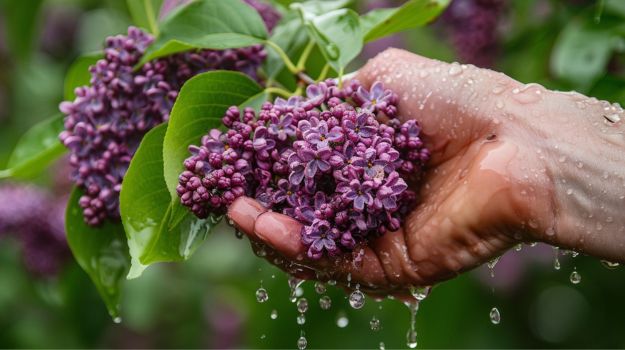
4. Purple Coneflower (Echinacea purpurea)
A native to North America, the purple coneflower is a perennial that blooms from early to late summer. It’s not only a garden beauty but also a medicinal plant, believed to boost the immune system.
The coneflower is a staple in wildflower gardens and prairie-style plantings, attracting bees, butterflies, and birds, contributing to the local ecosystem’s health.
- Blooming Season: Early to late summer.
- Sunlight Requirements: Full sun to partial shade.
- Soil Requirements: Well-drained soil; tolerant of poor soil conditions.
- Watering: Drought-tolerant once established; water regularly in extreme heat.
- Pruning Practices: Deadhead to prolong blooming; cut back in late winter/early spring.
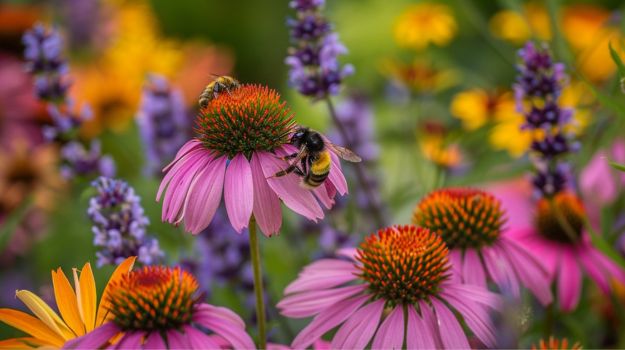
5. Allium (Allium spp.)
Alliums, with their dramatic globe-shaped blooms, are perennials that add a burst of color in late spring to early summer. These ornamental onions are deer-resistant and attract pollinators, making them a practical and beautiful choice for gardens. The tallest varieties, like ‘Globemaster’, can reach up to 4 feet in height, creating a stunning visual impact.
- Blooming Season: Late spring to early summer.
- Sunlight Requirements: Full sun.
- Soil Requirements: Well-drained, fertile soil.
- Watering: Moderate needs; water regularly during the growing season.
- Pruning Practices: Not necessary; you can deadhead spent flowers or leave them for winter interest.
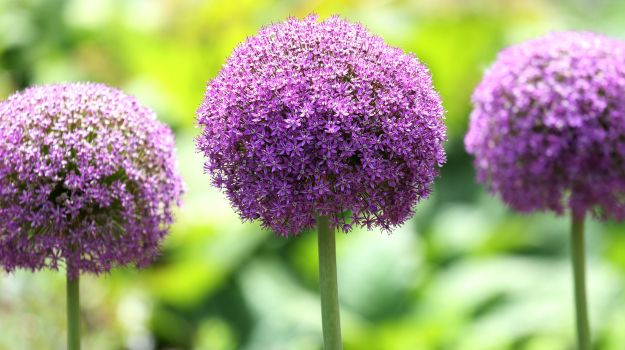
6. Salvia (Salvia spp.)
Salvias are beloved for their drought resistance and long blooming season, often from late spring through to the first frost. These perennials come in a range of purple shades, attracting bees and butterflies. The “Sage of the Diviners” or “Salvia Divinorum”, a type of salvia, is renowned for its psychoactive properties, used in traditional spiritual practices for its visions.
- Blooming Season: Late spring through to frost.
- Sunlight Requirements: Full sun.
- Soil Requirements: Well-drained soil.
- Watering: Drought-tolerant; water when the soil is dry to the touch.
- Pruning Practices: Prune in early spring to encourage bushiness and more blooms.
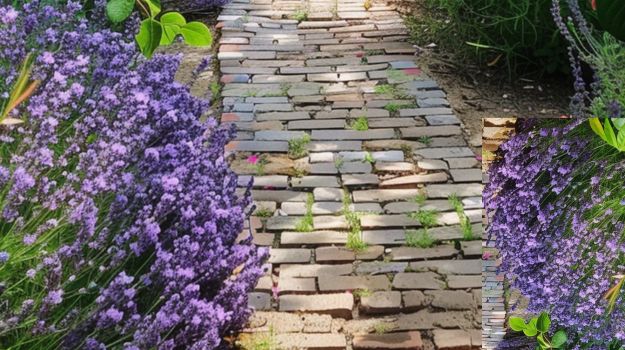
7. Orchid (Orchidaceae family)
Orchids, with their exotic beauty and diverse forms, can be both epiphytic and terrestrial. Some purple orchids, like the Phalaenopsis, are popular as houseplants due to their long-lasting flowers.
Orchids symbolize luxury and refinement, with some rare species being worth thousands of dollars. The Vanilla orchid, the source of vanilla flavoring, is a testament to the orchid family’s versatility.
- Blooming Season: Varies widely among species.
- Sunlight Requirements: Bright, indirect light.
- Soil Requirements: Orchid-specific potting mix.
- Watering: Allow to dry out between waterings; frequency depends on the type.
- Pruning Practices: After blooming, cut back the flower spike to encourage new growth.
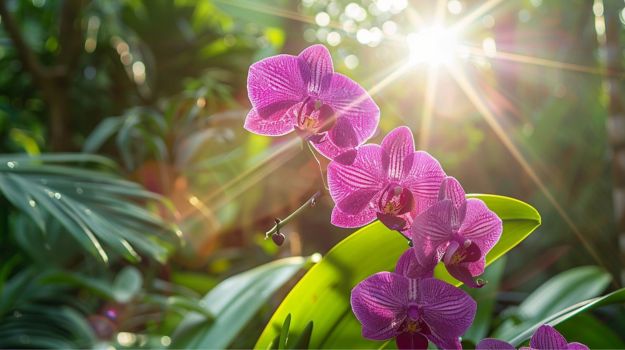
8. Bellflower (Campanula spp.)
Bellflowers are versatile perennials that bloom from early to late summer, offering a range of sizes and styles for any garden. The name “Campanula” is derived from the Latin for “little bell”, reflecting the shape of its flowers.
These plants can fit into any garden design, from rock gardens to cottage gardens, bringing a touch of whimsy and color. They are known for their resilience and ease of care, making them a favorite among both novice and experienced gardeners.
- Blooming Season: Early to late summer.
- Sunlight Requirements: Full sun to partial shade.
- Soil Requirements: Prefers well-drained, moist soil.
- Watering: Keep soil consistently moist but not waterlogged.
- Pruning Practices: Deadhead to encourage more blooms; cut back in late fall.
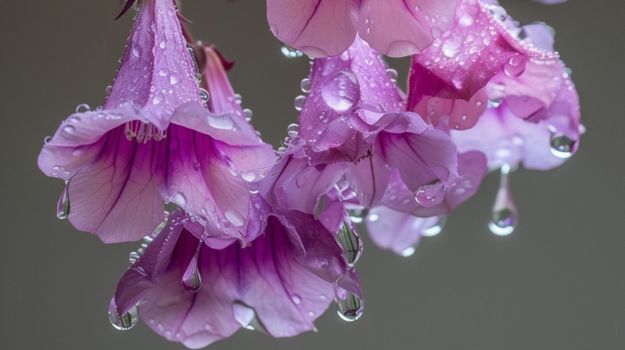
9. Foxglove (Digitalis purpurea)
Foxgloves are biennials or short-lived perennials, famous for their towering spikes of bell-shaped purple flowers. Blooming in early summer (June), they are a source of digitalis, used in heart medicine. While beautiful, all parts of the foxglove plant are toxic if ingested, making it important to plant in areas away from pets and children.
- Blooming Season: Early summer.
- Sunlight Requirements: Partial shade to full sun.
- Soil Requirements: Well-drained, moist soil rich in organic matter.
- Watering: Keep soil consistently moist.
- Pruning Practices: No pruning is necessary; let seed heads form to encourage self-seeding.
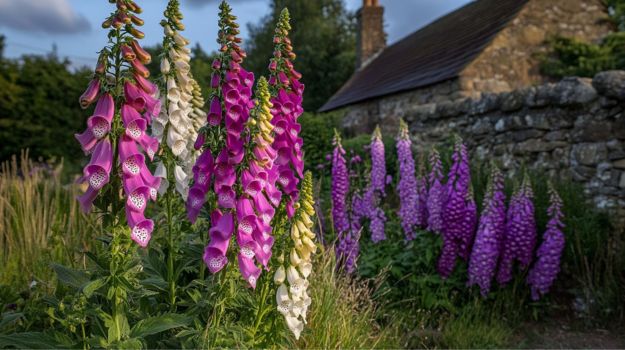
10. Verbena (Verbena bonariensis)
Verbena is a perennial that’s treated as an annual in cooler climates, known for its tall, slender stems and clusters of small purple flowers. Blooming from mid-summer to fall, it’s a magnet for butterflies and bees.
In ancient times, verbena was considered a powerful herb, used in love potions and for protection in Roman and Celtic cultures.
- Blooming Season: Mid-summer to fall.
- Sunlight Requirements: Full sun.
- Soil Requirements: Well-drained, moderately fertile soil.
- Watering: Drought-tolerant; water during prolonged dry spells.
- Pruning Practices: Cut back in early spring to encourage new growth.
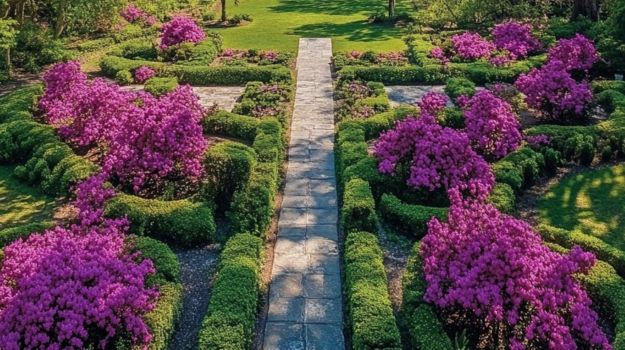
11. Aster (Aster spp.)
Asters are perennials that celebrate the end of the growing season with their daisy-like purple blooms in late summer and fall. They are named after the Greek word for “star”, reflecting their flower’s shape. Asters are associated with the myth of the goddess Astraea, who wept tears that turned into star-shaped flowers on Earth.
- Blooming Season: Late summer to fall.
- Sunlight Requirements: Full sun to partial shade.
- Soil Requirements: Well-drained, loamy soil.
- Watering: Keep soil evenly moist.
- Pruning Practices: Deadhead to promote continuous blooming; cut back in late fall.
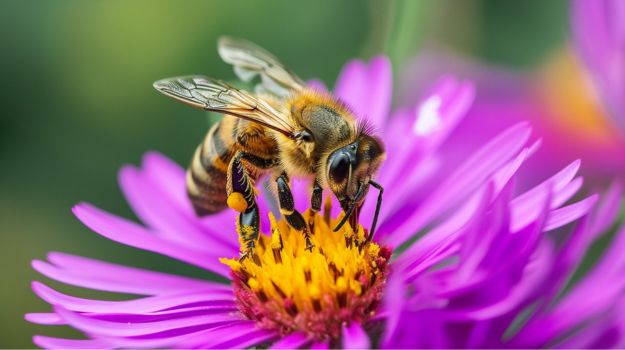
12. Clematis (Clematis spp.)
Clematis vines are perennials that grace trellises and walls with their showy flowers from spring through fall, depending on the variety. The name “clematis” comes from the Greek for “climbing plant”.
In Victorian floriography, clematis symbolized mental beauty and ingenuity, reflecting its intricate and intelligent climbing mechanism.
- Blooming Season: Varies by species, from spring to fall.
- Sunlight Requirements: Full sun to partial shade for the blooms, shaded roots.
- Soil Requirements: Well-drained, moist soil rich in organic matter.
- Watering: Regular watering, especially during dry periods.
- Pruning Practices: The pruning group depends on the flowering time; consult specific species guidelines.
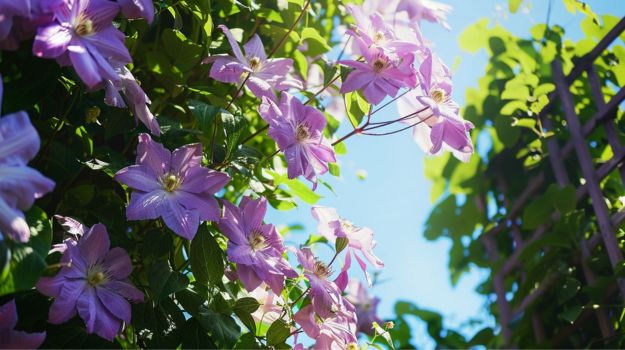
13. Wisteria (Wisteria spp.)
Wisteria is a long-lived perennial vine known for its stunning cascades of fragrant purple flowers in spring. In Japan, wisteria festivals celebrate the plant’s beauty and longevity, with some vines over 100 years old.
Wisteria symbolizes love and is often planted in gardens to create picturesque landscapes and inviting archways.
- Blooming Season: Spring to early summer.
- Sunlight Requirements: Full sun.
- Soil Requirements: Fertile, moist, well-drained soil.
- Watering: Water deeply once a week during dry periods.
- Pruning Practices: Prune twice a year, in winter and mid-summer, to control growth and encourage flowering.
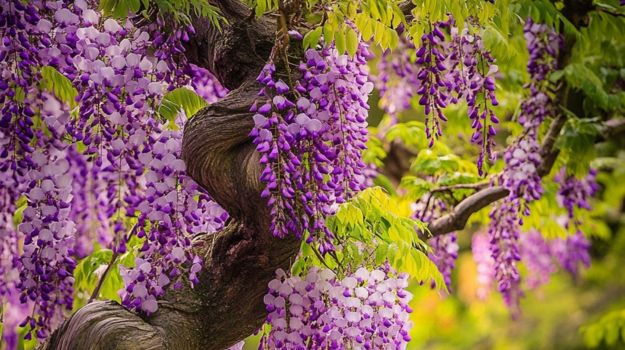
14. Violet (Viola spp.)
Violets are perennials or annuals, blooming in early spring with their delicate, heart-shaped flowers. They have been used in perfumery, medicine, and cuisine for centuries.
Napoleon Bonaparte famously adopted the violet as his emblem, leading to its association with loyalty and remembrance.
- Blooming Season: Early spring.
- Sunlight Requirements: Partial shade to full sun.
- Soil Requirements: Moist, well-drained soil rich in organic matter.
- Watering: Maintain even moisture.
- Pruning Practices: Deadhead to encourage more blooms.
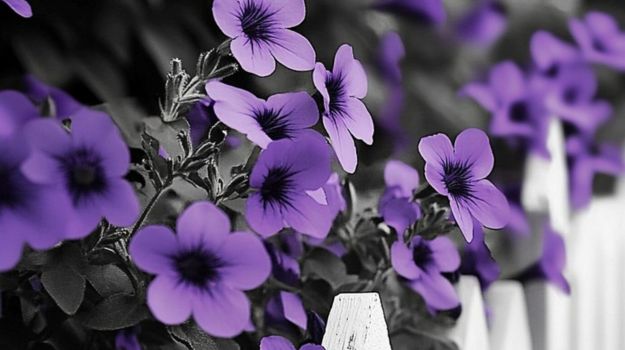
15. Pasque Flower (Pulsatilla vulgaris)
The pasque flower is a perennial that signals the arrival of spring with its purple, bell-shaped flowers and feathery seed heads. It’s native to Europe and prefers well-drained soil and full sun. The pasque flower is associated with Easter, as it blooms around that time.
They are perfect for rock gardens or borders, preferring sunny spots and well-drained soil. Pasque flowers are also known for their ability to adapt to various soil types, making them a versatile choice for different garden settings.
- Blooming Season: Early spring.
- Sunlight Requirements: Full sun.
- Soil Requirements: Well-drained, alkaline soil.
- Watering: Drought-tolerant once established; water sparingly.
- Pruning Practices: Deadhead spent flowers; leave seed heads for visual interest.
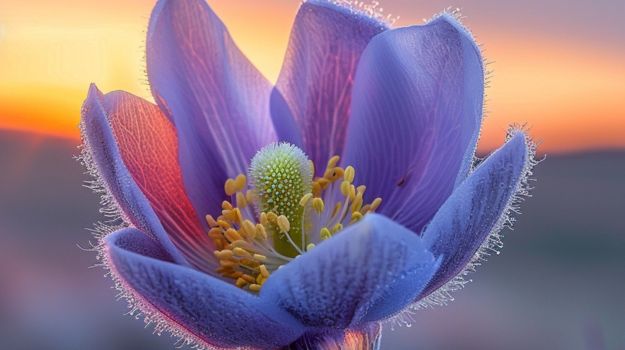
Ode à la Rose Tips for Design Ideas with Purple Flowers
At Ode a la Rose, our devotion extends beyond the exquisite elegance of cut flowers captured in our best selling bouquets, to embrace the full spectrum of floral beauty that nature offers. We believe in the transformative power of flowers, not just to adorn spaces but to enrich lives.
Our passion for floral artistry inspires us to share creative ideas that help you weave the charm of purple flowers into the very essence of your garden’s design. With an eye for beauty and a commitment to sustainability, we offer insights that blend aesthetic appeal with ecological harmony.
Create a Lavender Labyrinth
A lavender labyrinth is not just a garden feature; it’s a journey. Imagine wandering through serpentine paths of lavender, each step releasing the calming fragrance of these purple blooms. This design merges the visual beauty of lavender with its aromatherapeutic benefits, inviting peace and contemplation into your garden.
- Companion Plants: Introduce low-growing thyme or sedum along the paths. Their texture and color contrast with lavender’s soft spires, enhancing the sensory experience of your labyrinth.
Iris Borders for Structured Elegance
Irises stand as nature’s sculptures, their blooms a masterpiece of color and form. By lining your garden paths or borders with irises, you create a structured yet elegant framework that guides visitors through your garden. This layout not only showcases the beauty of irises but also brings a sense of order and flow to your outdoor space.
- Companion Plants: Combine with ornamental grasses for a contrasting backdrop or with low ground covers like creeping Jenny, which will carpet the ground with vibrant green, highlighting the irises’ towering grace.
A Symphony of Purples and Greens
In this garden design, purple flowers and green foliage perform in harmony, creating a landscape that vibrates with life yet exudes tranquility. By selecting a variety of purple-flowering plants and pairing them with lush greenery, you craft a visual and emotional depth that invites visitors to linger and marvel.
- Companion Plants: Weave together lavender, purple coneflowers, and alliums among ferns and hostas. This combination offers a layered experience of color, form, and texture, with each plant contributing to the garden’s overall melody.
Wildflower Meadow with a Purple Hue
A wildflower meadow themed around purple blooms is a celebration of nature’s effortless beauty and diversity. This approach not only paints your garden in a swath of vibrant purples but also supports the ecosystem by attracting pollinators.
It embodies the wild, untamed spirit of nature, with each season bringing new surprises.
- Companion Plants: Sprinkle your meadow with purple coneflowers, lavender, and native grasses. Together, they create a dynamic, evolving tableau that reflects the changing seasons and brings life to your garden.
Romantic Understory with Violets and Ferns
Designing a shaded area with violets and ferns conjures an image of a secret garden, where dappled light filters through overhead branches to reveal a lush, enchanted ground layer. This setting is perfect for quiet reflection and offers a cool retreat during warmer months.
- Companion Plants: Incorporate bleeding hearts and Solomon’s seal to add splashes of color and varied textures. These plants thrive under the same conditions and enhance the understory’s mystique with their unique flowers and foliage.
Climbing Clematis Accents
Climbing clematis brings an element of surprise and vertical interest to gardens. Training these vigorous vines on trellises or along fences allows their cascading blooms to create a living tapestry of purple. This design choice adds dimension and height, drawing the eye upwards to explore the full extent of your garden’s beauty.
- Companion Plants: Pair with climbing roses or honeysuckle for a layered effect of color and fragrance. This combination creates a stunning visual impact and olfactory delight, making your garden a magnet for both people and pollinators.
In crafting a garden, we weave a story not just of the plants we choose but of the moments we dream of creating within its embrace. Anniversaries, birthdays, baby showers, and even small backyard weddings, make it all happen by following our tips!
The use of purple flowers, with their depth of color and rich symbolism, adds layers of beauty, tranquility, and mystery to this narrative.
Our devotion goes beyond the fleeting beauty of cut flowers to the lasting joy that a thoughtfully designed garden can provide. Let the hues of purple flowers inspire you, bringing a touch of elegance, mystery, and depth to your outdoor sanctuary.
Looking to bring the beauty of flowers into your home as well? Explore Ode à la Rose’s exquisite collection of floral arrangements. Our passion for flowers extends from the garden to your doorstep, with each bouquet crafted to convey emotion and beauty.
Discover the perfect arrangement to complement your space or gift a touch of floral elegance to someone special. Visit us today and let the beauty of flowers transform your day.

